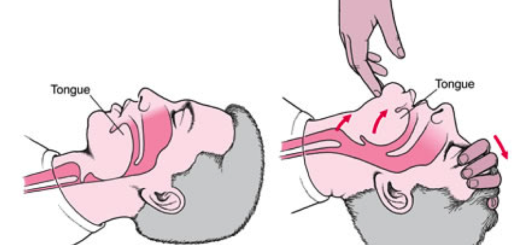What should you do when you first approach an injured person?
You should do a 10-second scene survey.
As you approach an emergency scene, scan the area for immediate dangers to yourself or to the injured victim. For example, if an automobile accident has left the vehicle in the roadway, obstructing traffic, you have to consider whether you can safely go to that vehicle to help the victim. Or you might notice that gasoline is dripping from the gas tank and that the battery is shorted out and sparking: The car could explode at any moment. In such circumstances, you should withdraw and get help before proceeding. It is not cowardly; it is merely realistic.
Never make a rescue attempt that you have not been specifically trained to do. You cannot help another if you become a victim.
Always ask: Is the scene safe to enter? Another thing to do in the first 10 seconds is to determine the cause of the injury. For example, if a victim was thrown against a steering wheel, the emergency department physician will know to check for liver, spleen, and cardiac injuries. Otherwise, the physician may never be able fully to recognize the extent of the injuries. Determine how many people are injured. There may be more than one victim, so look around and ask about others involved.
Calling the EMS System
When an emergency happens, generally you will know it. You can tell by the type of injuries seen or by the way the victim looks that it is time to call the emergency medical service (EMS). Call the EMS system whenever the situation is more than you can handle.
Here is a list of some situations when calling the EMS system is definitely the right thing to do:
- Severe bleeding
- Drowning
- Electrocution
- Possible heart attack
- No breathing, or breathing difficulty
- Choking
- Unconsciousness
- Poisoning
- Attempted suicide
- Critical burns
- Paralysis
- Suspected spinal cord injury
- Imminent childbirth
- Cardiac arrest
When an emergency occurs, do not first call your doctor, the hospital, a friend, relatives, or neighbours for help. First, call the EMS system (911 in most communities). Calling anyone else first will only waste time.

Calling the EMS system has several advantages:
- Many victims should not be moved except by trained personnel.
- The emergency medical technicians (EMTs) who arrive with the ambulance know what to do. In addition, they are in radio contact with physicians at the hospital.
- Care provided by EMTs at the scene and on the way to the hospital can affect the victim’s chances of survival and rate of recovery.
- Time will be saved in getting the victim to the hospital. If the situation is not an emergency, call your doctor. However, if you are in any doubt as to whether the situation is an emergency, call the EMS system.





Determine the cause of injury